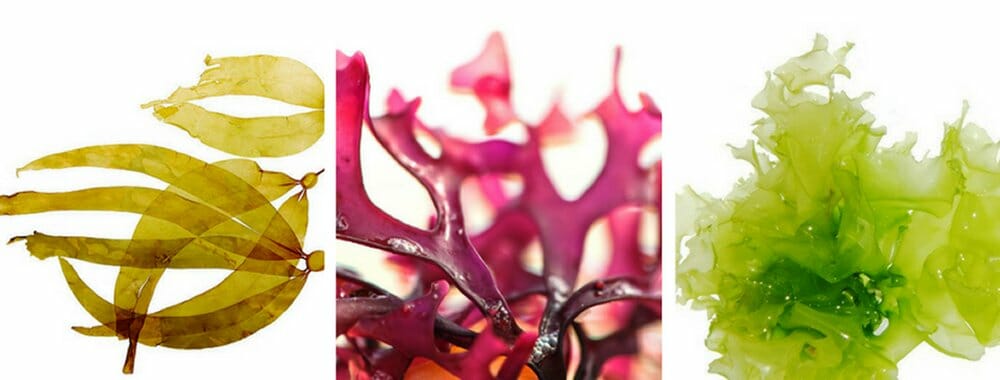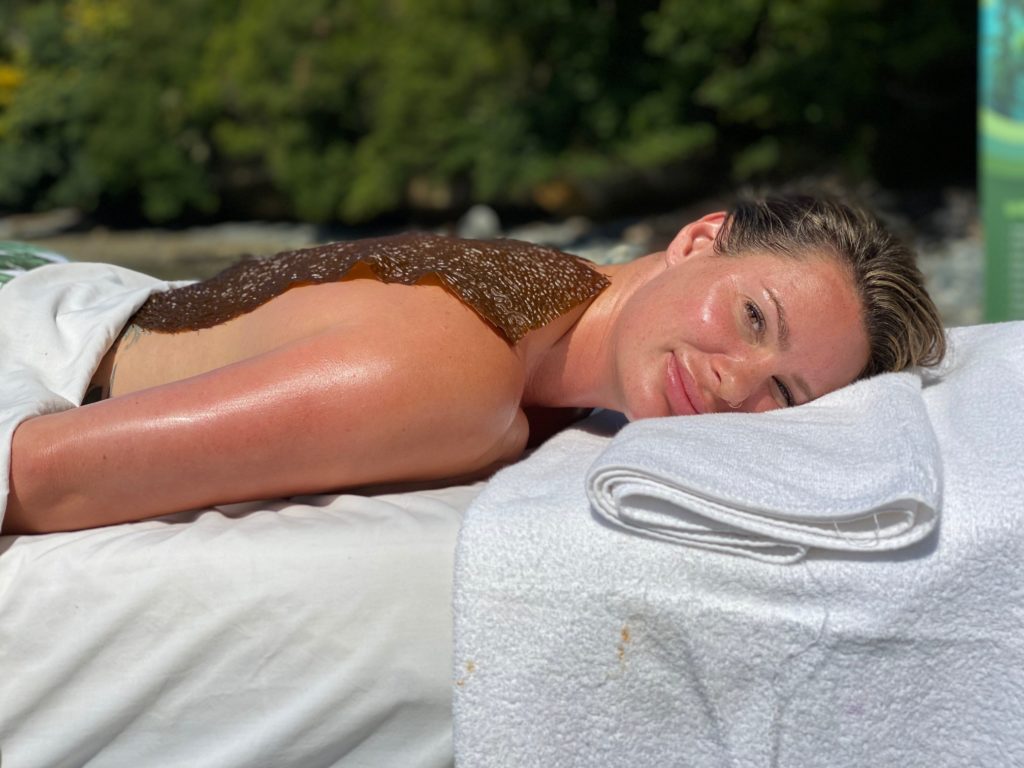What is the Best Seaweed to Use for Skincare?
Seaweed is universally amazing for anything health! Eating seaweed has been proven to be one of the best dietary sources of iodine, which helps support your thyroid gland. Although, it also contains other vitamins and minerals, such as vitamins D and K, zinc, iron and many other minerals, along with antioxidants that help protect your cells from damage. But that’s just eating it! Your skin absorbs up to 60% of what is topically applied, however algae is able to build a delivery system right to the bloodstream. Applying seaweed to the skin you directly nourish the dermal layers and can re-mineralize the body! But, is there a seaweed that’s better than another? And if so, what is the best seaweed for skincare? Read on to find out!
Seaweeds aren’t actually plants! They are a multicellular algae that grows in oceans across the globe. They are classified in the kingdom Protista. Within this classification, seaweeds are further grouped into their colour groups; Brown algae, Red algae and Green algae. Each seaweed holds their own unique properties and share most others. There are over 12,000 species of seaweeds that have been described to date, so, for simplicities’ sake, this blog will focus on the three main groups above, and their specific benefits.
Brown Seaweeds (Phaeophyta)
The Great Brown Kelps, or Phaeophyta seaweeds, here on the Outer Coast of Canada, are giants! Currently, brown seaweeds are being researched for their sun protection factor, and their effects on suppressing the enzyme tyrosinase and inhibiting hyperpigmentation. Seaflora’s great brown kelps are the most highly mineralized plants on earth. They accumulate minerals directly from the ocean and concentrate them within their structures in ionic form.
Properties and Benefits
Kelps are known to, antioxidize, nourish, heal, revitalize, tone, slim, rehydrate and protect the skin. They also have significant antiseptic, antifungal, antibacterial, antiviral and age-inhibiting properties. These seaweeds can benefit the skin by stimulating metabolism, encouraging perspiration for slimming treatments, assist in healing burns and wounds, regulate hormones, reduce water retention and stimulate the lymphatic system. Seaweed Body Gel is known as a cellulite eliminator in the spa industry of Canada.
Seaflora uses 5 types of Brown algae in our raw, certified organic skincare. This includes Macrocystis (Giant Kelp), Nereocystis (Bull Kelp), Fucus (Rockweed/Bladder Wrack), Laminaria (Sugar Kelp) and Alaria (Wakame).
Red Seaweeds (Rhodophyta)
Red seaweeds, or phaophyta, are a beautiful, intense red colour and are abundant in our wild harvesting areas. Their distinct hue is due to a pigment called phycoerythrin. In addition to antioxidants, these seaweeds contain a treasure of concentrates like amino acids. Vitamin A, C, zinc, fatty acids, polysaccarides, beta-carotene, iron, calcuim, magnesium, sodium and many trace-minerals are present in this enriched oceanic algae.
Properties and Benefits
Red seaweeds carry anti-bacterial, antiviral, antifungal, yeast inhibiting, anti-inflammatory, antioxidant, nourishing, moisturizing and wound healing properties. Seaweeds contain mucilage, which they use for their locomotion as well as storing food and moisture, keeping the seaweed from drying out when exposed to low tide and harsh conditions. These seaweeds can protect your skin from becoming dehydrated by locking in moisture. Red seaweeds are beneficial for the facial cells and is used throughout Seaflora’s skincare line to help repair skin cells, decrease inflammation, decrease scarring, nourish the skin, re-mineralize and balance, firm, tone, protect and soften the skin.
Seaflora uses 2 different Rhodophyta seaweeds; Iridaea (Rainbow Seaweed) and Pyropia (Nori). These are rich in protein, beta-carotene and help to build collagen and improve tone and texture.
Green Seaweeds (Chlorophyta)
Green seaweeds, or chlorophyta, have a forest green colour that comes from two high quality chlorophylls, A and B. Having the highest concentration of chlorophyll, these seaweeds deeply detoxify the body, decreases spikes in insulin, helps with skin healing, helps in detoxifying the blood, reduces the risk for cancer, increases energy, helps in eliminating odors (acts as a natural deodorant), and helps in boosting the immune system.
Properties and Benefits
Rich in vitamins and minerals, the green seaweeds have high concentrations of Vitamin A and C. It promotes collagen and elastin production as well as a healthy mucus membrane. Chlorophyll helps prevent wrinkles, signs of aging and increases protein synthesis and cell regeneration. Green seaweeds are astringent, protective, oxygenating, cleansing and anti-aging. They are purifying, toning, clarifying and cooling. These luscious green seaweeds encourage collagen, and elastin production, reduces oiliness and acne and protects the skin from environmental damage.
So, Which One is the Best Seaweed for Skincare?
All seaweeds are incredible for overall health and vitality in all aspects of our daily lives. Our blood plasma is less than 1 molecule different from ocean water. Seaweeds contain all of the essential vitamins, minerals, amino acids, fatty acids from our oceans that our skin needs to create a healthy, balanced flora. Although, if we had to choose the absolute best seaweed for skincare, it would have to be the Rhodophyta (Red Seaweeds). Why? They contain the most beta-carotene, vitamin A and collagen building protein. Collagen helps firm and maintain the elasticity and tone of the skin, while vitamin A and beta-carotene work together, converting into retinol A for powerful anti-aging protection. Retinol A aids to reduce the look of fine lines and wrinkles while increasing the production of collagen, and stimulating the production of new blood vessels in the skin, which improves skin color. Vitamin A also helps to fade age spots and soften rough patches on the skin.




